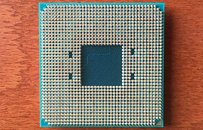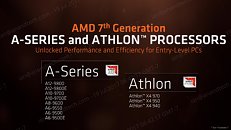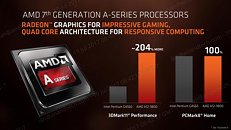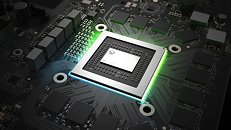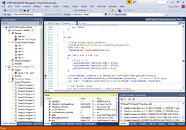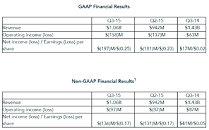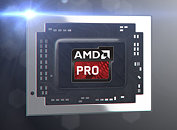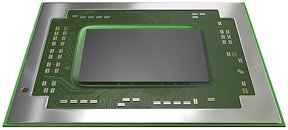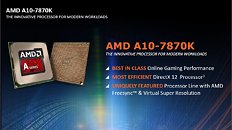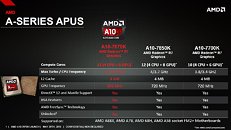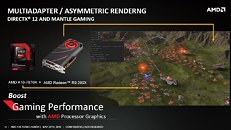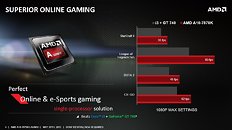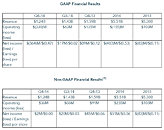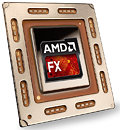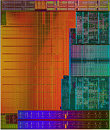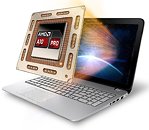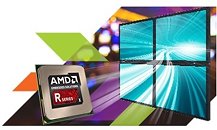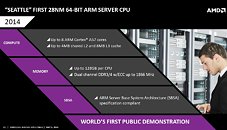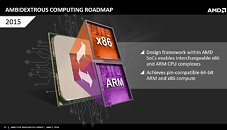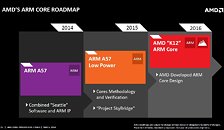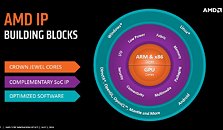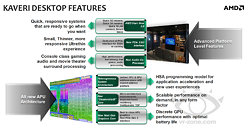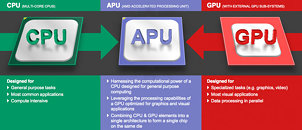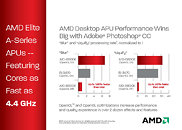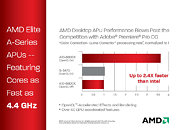Apr 18th, 2025 15:03 EDT
change timezone
Latest GPU Drivers
New Forum Posts
- What are you playing? (23396)
- TPU's Nostalgic Hardware Club (20256)
- Can Intel recover in DYI market anytime soon? (7)
- Spoofer Modified SMBIOS/BIOS – Need Help Restoring Original Motherboard Info (TUF GAMING B550-PLUS WiFi II) (2)
- Tried installing 576.02 - installer window disappears (20)
- GPU Pricing and Performance (14)
- Place your bets, what node will rtx 6000/RDNA 5(UDNA 1?) use (6)
- RX 9000 series GPU Owners Club (392)
- GPU Database (300)
- Drives fail to work with Rufus Windows TO GO (2)
Popular Reviews
- ASUS GeForce RTX 5060 Ti TUF OC 16 GB Review
- NVIDIA GeForce RTX 5060 Ti PCI-Express x8 Scaling
- Palit GeForce RTX 5060 Ti Infinity 3 16 GB Review
- G.SKILL Trident Z5 NEO RGB DDR5-6000 32 GB CL26 Review - AMD EXPO
- ASUS GeForce RTX 5060 Ti Prime OC 16 GB Review
- MSI GeForce RTX 5060 Ti Gaming OC 16 GB Review
- Zotac GeForce RTX 5060 Ti AMP 16 GB Review
- Teevolution Terra Pro Review
- MSI GeForce RTX 5060 Ti Gaming Trio OC 16 GB Review
- ASUS GeForce RTX 5080 TUF OC Review
Controversial News Posts
- NVIDIA GeForce RTX 5060 Ti 16 GB SKU Likely Launching at $499, According to Supply Chain Leak (182)
- NVIDIA Sends MSRP Numbers to Partners: GeForce RTX 5060 Ti 8 GB at $379, RTX 5060 Ti 16 GB at $429 (127)
- Nintendo Confirms That Switch 2 Joy-Cons Will Not Utilize Hall Effect Stick Technology (105)
- Over 200,000 Sold Radeon RX 9070 and RX 9070 XT GPUs? AMD Says No Number was Given (100)
- Nintendo Switch 2 Launches June 5 at $449.99 with New Hardware and Games (99)
- NVIDIA Launches GeForce RTX 5060 Series, Beginning with RTX 5060 Ti This Week (98)
- Sony Increases the PS5 Pricing in EMEA and ANZ by Around 25 Percent (85)
- NVIDIA PhysX and Flow Made Fully Open-Source (77)
News Posts matching #HSA
Return to Keyword Browsing
AMD's Bristol Ridge APUs Released for the AM4 Platform in Retail Channels
AMD's AM4 socket really is shaping up to be one of the company's most versatile to date. From true quad-core CPUS (just now available through Ryzen 3's launch through to veritable svelte behemoths 8-core, 16-thread CPUs, AM4 has something for every consumer. AMD is now taking that show further with the release of the Bristol Ridge family of APUs, which includes eight APUs and three CPUs. While pricing wasn't announced at time of writing, the top-priced part should fall below the $110 mark and bottom out at $50, so as not to collide with AMD's Ryzen 3 1200 (although these products aren't specifically overlapping anyway.)
AMD's new entry-level processors will hit a maximum of 65 W TDP, with the top spot being taken by the 2-module, 4-threads A12-9800, running at 3.8 GHz base and 4.2 GHz Turbo. This part holds a Radeon R7 GPU with 512 Stream Processors (GCN 1.3, the same as in the Fury GPUs) running at 800 MHz Base and 1108 MHz Turbo. There are three 35 W parts (denoted by a capital E after the model name.) One thing users should take into account is that the Bristol Ridge APUs deliver a maximum of 8x PCIe 3.0 lanes - thus rendering a multi-GPU solution unfeasible.
AMD's new entry-level processors will hit a maximum of 65 W TDP, with the top spot being taken by the 2-module, 4-threads A12-9800, running at 3.8 GHz base and 4.2 GHz Turbo. This part holds a Radeon R7 GPU with 512 Stream Processors (GCN 1.3, the same as in the Fury GPUs) running at 800 MHz Base and 1108 MHz Turbo. There are three 35 W parts (denoted by a capital E after the model name.) One thing users should take into account is that the Bristol Ridge APUs deliver a maximum of 8x PCIe 3.0 lanes - thus rendering a multi-GPU solution unfeasible.

Microsoft Won't be Profiting from the Xbox One X's $499 Price Point
The lid was taken from Microsoft's Project Scorpio console last weekend. Commercially named the Xbox One X, the new Xbox console will join the "Xbox family of devices" with much higher power envelope than any other console currently in the market, at 6 TFLOPs of computing power. At that rate, Microsoft says (and has demonstrated) that its new console will be able to power premium, true 4K experiences. However, some analysts say that the $499 price point will be too high for consumers, which usually look to purchase consoles in the $249, $349 price band.
That said, the question could be put to Microsoft whether or not the company could have decreased their new console's pricing even further, by taking a cut from the hardware selling profits. When asked whether Microsoft was making any profit at all from the Xbox One X's retail pricing, Phil Spencer answered with a pretty frontal "No". So Microsoft really isn't profiting from the sale of any Xbox One X console, which may look somewhat unbelievable considering its steep price point (relatively; we have to keep in mind this console Can actually power 4K experiences.) However, this is nothing new: in fact, most gaming consoles ever released barely made any amount of money on hardware sales at the moment of their introduction to market. Manufacturers such as Microsoft and Sony instead usually choose to subsidize console purchases by bringing their profit margin to zero (and sometimes even below zero, as in, the consoles cost more to manufacture than their selling point) so as to allow a greater number of customers to purchase the hardware. Software, and more recently DLC, is where the money is to be made in consoles.
That said, the question could be put to Microsoft whether or not the company could have decreased their new console's pricing even further, by taking a cut from the hardware selling profits. When asked whether Microsoft was making any profit at all from the Xbox One X's retail pricing, Phil Spencer answered with a pretty frontal "No". So Microsoft really isn't profiting from the sale of any Xbox One X console, which may look somewhat unbelievable considering its steep price point (relatively; we have to keep in mind this console Can actually power 4K experiences.) However, this is nothing new: in fact, most gaming consoles ever released barely made any amount of money on hardware sales at the moment of their introduction to market. Manufacturers such as Microsoft and Sony instead usually choose to subsidize console purchases by bringing their profit margin to zero (and sometimes even below zero, as in, the consoles cost more to manufacture than their selling point) so as to allow a greater number of customers to purchase the hardware. Software, and more recently DLC, is where the money is to be made in consoles.

AMD Releases CodeXL 2.0 as Open Source Through GPUOpen
CodeXL is now part of the GPUOpen initiative. You can find all of CodeXL's source code (barring a few parts that are IP-confidential) on the CodeXL GitHub project. Version 2.0 is also available in pre-built binary form, like previous versions. We believe that by adopting the open-source model and sharing the CodeXL source base with the world we can help developers make better use of CodeXL and make CodeXL a better tool.
To encourage 3rd party contribution and adoption, CodeXL is no longer branded as an AMD product. AMD will still continue development of this tool and upload new CodeXL versions and features to GPUOpen.
To encourage 3rd party contribution and adoption, CodeXL is no longer branded as an AMD product. AMD will still continue development of this tool and upload new CodeXL versions and features to GPUOpen.

Sulon Q Powered by AMD, is the World's Most Advanced VR+AR Headset
As the 2016 Game Developer Conference kicks off, virtual and augmented reality continues to be top of mind for today's developers and consumers. And it should be. It represents the future of communication and computing, and the promise virtual reality has held for so long finally seems within grasp of today's technologies. Today, Sulon Technologies gets one step closer to that promise, unveiling a neak peek of the Sulon Q, the world's first and only all-in-one, tether-free, "wear and play" headset for virtual reality, augmented reality, and spatial computing.
On stage in front of more than 650 press and developers at the inaugural AMD Radeon "Capsaicin" event, I took the stage to give the world a glimpse of what we've been working on, showing off the forthcoming Sulon Q headset, and the intuitive experiences you can expect, including seamlessly transitioning from the real world to virtual worlds.
On stage in front of more than 650 press and developers at the inaugural AMD Radeon "Capsaicin" event, I took the stage to give the world a glimpse of what we've been working on, showing off the forthcoming Sulon Q headset, and the intuitive experiences you can expect, including seamlessly transitioning from the real world to virtual worlds.
HSA Announces Publication of New Guide to Heterogeneous System Architecture
The Heterogeneous System Architecture (HSA) Foundation today announced publication of Heterogeneous System Architecture: A New Compute Platform Infrastructure (1st Edition), edited by Dr. Wen-Mei Hwu. The book, published by Elsevier Publishing (found here: here), offers a practical guide to understanding HSA, a standardized platform design that unlocks the performance and power efficiency of parallel computing engines found in most modern electronic devices.
"Heterogeneous computing is a key enabler of the next generation of compute environments, wherein entire systems will interconnect autonomously and in real time," said HSA Foundation President Dr. John Glossner. "Developers who are skilled in the use of this platform will have the upper hand in terms of design time, IP portability, power efficiency and performance."
To support these developers, the HSA Foundation working groups are rapidly standardizing tools and APIs for debug and profiling, creating guidelines for incorporating IP from multiple vendors into the same SoC, and much more. The Foundation released the v1.0 specification in March, and soon thereafter, companies including AMD, ARM, Imagination Technologies and MediaTek previewed their plans for rolling out the world's first products based on HSA.
"Heterogeneous computing is a key enabler of the next generation of compute environments, wherein entire systems will interconnect autonomously and in real time," said HSA Foundation President Dr. John Glossner. "Developers who are skilled in the use of this platform will have the upper hand in terms of design time, IP portability, power efficiency and performance."
To support these developers, the HSA Foundation working groups are rapidly standardizing tools and APIs for debug and profiling, creating guidelines for incorporating IP from multiple vendors into the same SoC, and much more. The Foundation released the v1.0 specification in March, and soon thereafter, companies including AMD, ARM, Imagination Technologies and MediaTek previewed their plans for rolling out the world's first products based on HSA.

AMD Reports 2015 Third Quarter Results
AMD today announced revenue for the third quarter of 2015 of $1.06 billion, operating loss of $158 million, and net loss of $197 million, or $0.25 per share. Non-GAAP operating loss was $97 million and non-GAAP net loss was $136 million, or $0.17 per share. GAAP and non-GAAP results include a $65 million inventory write-down and the impact of this charge to loss per share was $0.08.
"AMD delivered double-digit percentage sequential revenue growth in both of our segments in the third quarter," said Dr. Lisa Su, AMD president and CEO. "We continue to take targeted actions to improve long-term financial performance, build great products and simplify our business model. The formation of a joint venture of our back-end manufacturing assets is a significant step towards achieving these goals and strengthening our balance sheet."
"AMD delivered double-digit percentage sequential revenue growth in both of our segments in the third quarter," said Dr. Lisa Su, AMD president and CEO. "We continue to take targeted actions to improve long-term financial performance, build great products and simplify our business model. The formation of a joint venture of our back-end manufacturing assets is a significant step towards achieving these goals and strengthening our balance sheet."

AMD Announces PRO A-Series Processors for Business
AMD today introduced its most powerful line of AMD PRO A-Series mobile and desktop processors (formerly codenamed "Carrizo PRO" and "Godavari PRO") to deliver exceptional value and performance for today's challenging workloads. The new line of AMD PRO A-Series processors offer enhanced performance, reliability and opportunity to business users and IT decision makers and are designed for the future with Microsoft Windows 10. With its AMD PRO mobile processors, AMD powers some of the first-to-market Windows 10-enabled commercial notebook systems for those looking to upgrade.
"The innovative architecture of new AMD PRO processors delivers compelling performance to stay ahead of the evolving demands of business today," said Jim Anderson, senior vice president and general manager, computing and graphics, AMD. "Going PRO with AMD means unmatched dependability with platform stability, processor longevity and an opportunity for richer system configurations. AMD gives its customers choice and affordability to meet specific business needs, without compromising the ability to manage and maintain a secure, stable, and reliable environment."
"The innovative architecture of new AMD PRO processors delivers compelling performance to stay ahead of the evolving demands of business today," said Jim Anderson, senior vice president and general manager, computing and graphics, AMD. "Going PRO with AMD means unmatched dependability with platform stability, processor longevity and an opportunity for richer system configurations. AMD gives its customers choice and affordability to meet specific business needs, without compromising the ability to manage and maintain a secure, stable, and reliable environment."

AMD Unveils 6th Generation A-Series Processor
AMD today announced its 6th Generation A-Series Processor, the world's first high-performance Accelerated Processing Unit (APU) in a System-on-Chip (SoC) design. Previously codenamed "Carrizo," the 6th Generation AMD A-Series Processor takes advantage of extensive AMD processor and graphics IP enabling exceptional computing experiences not possible before. The 6th Generation AMD A-Series Processor is the most versatile notebook processor ever produced, built to excel at today's and tomorrow's consumer and business applications, delivering premium streaming entertainment, unmatched smooth online gaming, and innovative computing experiences, with all day unplugged performance.
The world's first high-performance Accelerated Processing Unit in a SoC design marks a number of technology firsts: the world's first High Efficiency Video Coding (HEVC) hardware decode support for notebooks, the first Heterogeneous Systems Architecture (HSA) 1.0-compliant design, and the first ARM TrustZone-capable high-performance APU. The new processor harnesses up to 12 Compute Cores -- 4 CPU + 8 GPU -- leveraging AMD "Excavator" cores and the third generation of AMD's award-winning Graphics Core Next (GCN) architecture. The result is a groundbreaking processor that boasts more than twice the battery life of its predecessor, up to 2x faster gaming performance than competitive processors, innovative computing experiences enabled through HSA, and a premium Microsoft Windows 10 experience with support for DirectX 12, adding up to an extraordinary experience for consumers.
The world's first high-performance Accelerated Processing Unit in a SoC design marks a number of technology firsts: the world's first High Efficiency Video Coding (HEVC) hardware decode support for notebooks, the first Heterogeneous Systems Architecture (HSA) 1.0-compliant design, and the first ARM TrustZone-capable high-performance APU. The new processor harnesses up to 12 Compute Cores -- 4 CPU + 8 GPU -- leveraging AMD "Excavator" cores and the third generation of AMD's award-winning Graphics Core Next (GCN) architecture. The result is a groundbreaking processor that boasts more than twice the battery life of its predecessor, up to 2x faster gaming performance than competitive processors, innovative computing experiences enabled through HSA, and a premium Microsoft Windows 10 experience with support for DirectX 12, adding up to an extraordinary experience for consumers.

AMD Announces New A-Series Desktop APUs
AMD today introduced the latest addition to its line of desktop A-Series processors, the A10-7870K APU, a refresh to the existing line of processors codenamed "Kaveri". The A10-7870K delivers a best-in-class experience for eSports and online gaming with superior performance, best-in-class efficiency in DirectX 12, and unique features. The new processor also delivers exceptional performance in modern workloads and is designed for the future with Microsoft Windows 10.
The latest iteration of the popular and powerful AMD A-Series APU family provides premium performance and multitasking powered by up to 12 compute cores (4 CPU + 8 GPU). The responsiveness and processing power of the A10-7870K APU enables an immersive user experience on Windows 10 PCs while offering an easy path for PC builders looking to upgrade to discrete-level graphics and faster processing at an afforadable price. The A10-7870K APU is available at e-tail now at a suggested price (SEP) of US $137, and through participating system builders.
The latest iteration of the popular and powerful AMD A-Series APU family provides premium performance and multitasking powered by up to 12 compute cores (4 CPU + 8 GPU). The responsiveness and processing power of the A10-7870K APU enables an immersive user experience on Windows 10 PCs while offering an easy path for PC builders looking to upgrade to discrete-level graphics and faster processing at an afforadable price. The A10-7870K APU is available at e-tail now at a suggested price (SEP) of US $137, and through participating system builders.

AMD Reports 2014 Fourth Quarter and Annual Results
AMD (NASDAQ: AMD) today announced revenue for the fourth quarter of 2014 of $1.24 billion, operating loss of $330 million and net loss of $364 million, or $0.47 per share. Non-GAAP(1) operating income was $36 million, non-GAAP(1) net income of $2 million and breakeven non-GAAP(1) earnings per share.
"We made progress diversifying our business, ramping design wins and improving our balance sheet this past year despite challenges in our PC business," said Dr. Lisa Su, AMD president and CEO. "Annual Enterprise, Embedded and Semi-Custom segment revenue increased over 50% as customer demand for products powered by our high-performance compute and rich visualization solutions was strong. We continue to address channel headwinds in the Computing and Graphics segment and are taking steps to return it to a healthy trajectory beginning in the second quarter of 2015."
"We made progress diversifying our business, ramping design wins and improving our balance sheet this past year despite challenges in our PC business," said Dr. Lisa Su, AMD president and CEO. "Annual Enterprise, Embedded and Semi-Custom segment revenue increased over 50% as customer demand for products powered by our high-performance compute and rich visualization solutions was strong. We continue to address channel headwinds in the Computing and Graphics segment and are taking steps to return it to a healthy trajectory beginning in the second quarter of 2015."

AMD Mobile "Carrizo" Family of APUs Arrive in 2015
AMD (NYSE: AMD) today at its Future of Compute event announced the addition of its first high performance system-on-a-chip (SoC), codenamed "Carrizo", and a mainstream SoC codenamed "Carrizo-L" as part of the company's 2015 AMD Mobile APU family roadmap. In collaboration with hardware and software partners, these new 2015 AMD Mobile APUs are designed as complete solutions for gaming, productivity applications, and ultra high-definition 4K experiences. With support for Microsoft DirectX 12, OpenCL 2.0, AMD's Mantle API, AMD FreeSync and support for Microsoft's upcoming Windows 10 operating system, the 2015 AMD Mobile APU family enables the experiences consumers expect.
"We continue to innovate and build upon our existing IP to deliver great products for our customers," said John Byrne, senior vice president and general manager, Computing and Graphics business group, AMD. "AMD's commitment to graphics and compute performance, as expressed by our goal to improve APU energy efficiency 25x by 2020, combines with the latest industry standards and fresh innovation to drive the design of the 2015 AMD Mobile APU family. We are excited about the experiences these new APUs will bring and look forward to sharing more details in the first half of next year."
"We continue to innovate and build upon our existing IP to deliver great products for our customers," said John Byrne, senior vice president and general manager, Computing and Graphics business group, AMD. "AMD's commitment to graphics and compute performance, as expressed by our goal to improve APU energy efficiency 25x by 2020, combines with the latest industry standards and fresh innovation to drive the design of the 2015 AMD Mobile APU family. We are excited about the experiences these new APUs will bring and look forward to sharing more details in the first half of next year."

AMD Awarded $32 Million for 'Extreme Scale' High-Performance Computing Research
AMD (NYSE: AMD) today announced that for the third straight year it was awarded research grants for development of critical technologies needed for extreme-scale computing in conjunction with projects associated with the U.S. Department of Energy (DOE) Extreme-Scale Computing Research and Development Program, known as "FastForward 2."
The two DOE awards, totaling more than $32 million, will fund research focused on exascale applications for AMD Accelerated Processing Units (APUs) based on the open-standard Heterogeneous System Architecture (HSA), as well as future memory systems to power a generation of exascale supercomputers capable of delivering 30-60 times more performance than today's fastest supercomputers.
The two DOE awards, totaling more than $32 million, will fund research focused on exascale applications for AMD Accelerated Processing Units (APUs) based on the open-standard Heterogeneous System Architecture (HSA), as well as future memory systems to power a generation of exascale supercomputers capable of delivering 30-60 times more performance than today's fastest supercomputers.

AMD Introduces New APUs for System Builder and DIY Market
AMD today introduced the new AMD A10-7800 Accelerated Processing Unit (APU) to the component channel. This 4th generation A-Series APU with 12 Compute Cores (4CPU + 8 GPU) unlocks the APU potential with Heterogeneous System Architecture (HSA) features, and boasts powerful AMD Radeon R7 Series graphics for outstanding performance across applications. Combined with AMD's acclaimed Mantle API, the AMD A10-7800 APU can enable accelerated performance across select AMD Gaming Evolved partner titles.
"The AMD A-Series APUs bring a superior level of gaming and compute experiences to the desktop PC," said Bernd Lienhard, corporate vice president and general manager, Client Business Unit, AMD. "With support for AMD's acclaimed Mantle API that simplifies game optimizations for programmers and developers to unlock unprecedented levels of gaming performance transforming the world of game development to help bring better, faster games to the PC."
"The AMD A-Series APUs bring a superior level of gaming and compute experiences to the desktop PC," said Bernd Lienhard, corporate vice president and general manager, Client Business Unit, AMD. "With support for AMD's acclaimed Mantle API that simplifies game optimizations for programmers and developers to unlock unprecedented levels of gaming performance transforming the world of game development to help bring better, faster games to the PC."

AMD Aims to Revolutionize Commercial PCs With New AMD PRO A-Series Line of APUs
AMD (NYSE: AMD) today announced its new AMD PRO A-Series APUs, delivering rich computing experiences to commercial PCs. The innovative processor technology from AMD will enable a new class of powerful, sleek and sophisticated commercial Windows PCs that integrate seamlessly into an existing IT environment. With impressive performance, the latest AMD PRO A-Series APUs with HSA features unlock true business computing performance and deliver outstanding reliability and manageability. The AMD PRO A-Series APU is one of the processors being offered in new HP Elite 700-Series notebooks.
"With the new AMD PRO A-Series APUs, AMD is looking to revolutionize commercial computing. Built around a solid offering of increased performance over our consumer products, increased product longevity and software image stability, AMD PRO processors give customers choice and affordability to meet their specific business needs," said Bernd Lienhard, corporate vice president and general manager, Client Products. "And since every AMD PRO processor packs the latest Radeon Graphics, we are raising the bar for visual performance in business PCs."
"With the new AMD PRO A-Series APUs, AMD is looking to revolutionize commercial computing. Built around a solid offering of increased performance over our consumer products, increased product longevity and software image stability, AMD PRO processors give customers choice and affordability to meet their specific business needs," said Bernd Lienhard, corporate vice president and general manager, Client Products. "And since every AMD PRO processor packs the latest Radeon Graphics, we are raising the bar for visual performance in business PCs."

AMD Announces Its Most Advanced Mobile APU for Consumer and Commercial Notebooks
AMD (NYSE: AMD) today introduced its new 2014 Performance Mobile APUs designed for ultrathin and high-performance mobile PCs, bringing the features and capabilities of the popular and powerful AMD A-Series APU family (codenamed "Kaveri") to power-efficient notebooks for both personal and professional use. The new mobile APUs mark the debut of Heterogeneous System Architecture (HSA) features and Graphics Core Next (GCN) Architecture for mobile devices, establishing them as AMD's most advanced mobile APUs to-date. Notebook and desktop systems powered by AMD's entire 2014 APU lineup, including systems from Acer, Asus, Dell, HP, Lenovo, Samsung, Toshiba and others also debuted at COMPUTEX TAIPEI 2014.
"AMD takes a major step forward today on our journey to transform and enhance the computing experience with the launch of the 2014 Performance Mobile APU family," said Bernd Lienhard, corporate vice president and general manager, Client Business Unit, AMD. "With a combination of superior total compute performance, stunning graphics and efficient power use alongside industry-first technologies, these new APUs set a new bar for cutting-edge consumer and commercial PCs."
The announcement of the 2014 Performance Mobile APU family features AMD's first FX-branded enthusiast-class APU for notebooks, and follows the recent introduction of AMD's 2014 Low-Power and Mainstream APUs.
"AMD takes a major step forward today on our journey to transform and enhance the computing experience with the launch of the 2014 Performance Mobile APU family," said Bernd Lienhard, corporate vice president and general manager, Client Business Unit, AMD. "With a combination of superior total compute performance, stunning graphics and efficient power use alongside industry-first technologies, these new APUs set a new bar for cutting-edge consumer and commercial PCs."
The announcement of the 2014 Performance Mobile APU family features AMD's first FX-branded enthusiast-class APU for notebooks, and follows the recent introduction of AMD's 2014 Low-Power and Mainstream APUs.

AMD Announces 2nd Generation Embedded R-Series APUs and CPUs
AMD today announced the 2nd generation AMD Embedded R-series accelerated processing unit (APU) and CPU family (previously codenamed "Bald Eagle") for embedded applications. The new solutions are targeted at gaming machines, medical imaging, digital signage, industrial control and automation (IC&A), communications and networking infrastructure that require industry-leading compute and graphics processing technology.
"When it comes to compute performance, graphics performance and performance-per-watt, the 2nd generation AMD Embedded R-series family is unique in the embedded market," said Scott Aylor, corporate vice president and general manager, AMD Embedded Solutions. "The addition of HSA, GCN and power management features enables our customers to create a new world of intelligent, interactive and immersive embedded devices."
"When it comes to compute performance, graphics performance and performance-per-watt, the 2nd generation AMD Embedded R-series family is unique in the embedded market," said Scott Aylor, corporate vice president and general manager, AMD Embedded Solutions. "The addition of HSA, GCN and power management features enables our customers to create a new world of intelligent, interactive and immersive embedded devices."

AMD Announces Ambidextrous Computing Roadmap
AMD today announced a roadmap of near- and mid-term computing solutions that harness the best characteristics of both the x86 and ARM ecosystems, called "ambidextrous computing." The cornerstone of this roadmap is the announcement of AMD's 64-bit ARM architecture license for the development of custom high-performance cores for high-growth markets. Today's announcement also provides a forward-looking glimpse into AMD's development plans to deliver truly unmatched ambidextrous computing and graphics performance using a shared, flexible infrastructure to enable its customers to blaze new paths of innovation for the embedded, server and client markets as well as semi-custom solutions.
"Before today, AMD was the only company in the world to deliver high performance and low-power x86 with leadership graphics. AMD now takes a bold step forward and has become the only company that can provide high-performance 64-bit ARM and x86 CPU cores paired with world-class graphics," said Rory Read, AMD president and CEO. "Our innovative ambidextrous design capability, combined with our portfolio of IP and expertise with high-performance SoCs, means that AMD is set to deliver ambidextrous solutions that enable our customers to change the world in more efficient and powerful ways."
"Before today, AMD was the only company in the world to deliver high performance and low-power x86 with leadership graphics. AMD now takes a bold step forward and has become the only company that can provide high-performance 64-bit ARM and x86 CPU cores paired with world-class graphics," said Rory Read, AMD president and CEO. "Our innovative ambidextrous design capability, combined with our portfolio of IP and expertise with high-performance SoCs, means that AMD is set to deliver ambidextrous solutions that enable our customers to change the world in more efficient and powerful ways."

AMD's Lisa Su Named UBM Executive of the Year
AMD Senior Vice President and General Manager, Global Business Units, Lisa Su has been named a winner in the EE Times and EDN 2014 UBM Tech ACE Awards in the Executive of the Year category. The awards program honors the people and companies behind the technologies and products that are changing the world of electronics.
The winners were announced at an awards ceremony Tuesday, April 1, at The Fairmont San Jose, during EE Live! "I am flattered and honored to be selected for the UBM 'Executive of the Year' award. When I look at the list of this year's nominees and past winners, it is a who's who of the industry's leaders," said Su. "AMD is in the middle of an important and comprehensive transformation, but it is very much a team effort. On behalf of the entire AMD team, we very much appreciate the recognition for the work."
The winners were announced at an awards ceremony Tuesday, April 1, at The Fairmont San Jose, during EE Live! "I am flattered and honored to be selected for the UBM 'Executive of the Year' award. When I look at the list of this year's nominees and past winners, it is a who's who of the industry's leaders," said Su. "AMD is in the middle of an important and comprehensive transformation, but it is very much a team effort. On behalf of the entire AMD team, we very much appreciate the recognition for the work."

AMD Debuts New SDK, Tools and Libraries, for Heterogeneous Computing Developers
AMD kicked off its 2013 Developer Summit (APU13) today, announcing a new unified Software Development Kit (SDK,) an improved CodeXL tool suite with added features and support for the latest AMD hardware, and added heterogeneous acceleration in popular Open Source libraries. Together, these tools provide a substantial step forward in productivity and ease-of-use for developers wishing to harness the full power of modern heterogeneous platforms spanning form servers to PCs to handheld devices.
"Developers are essential to our mission of realizing the full potential of modern computing technologies," said Manju Hegde, corporate vice president, Heterogeneous Solutions, AMD. "Enriching the developer experience by harnessing these technologies is a critical part of AMD's mission to accelerate developer adoption."
"Developers are essential to our mission of realizing the full potential of modern computing technologies," said Manju Hegde, corporate vice president, Heterogeneous Solutions, AMD. "Enriching the developer experience by harnessing these technologies is a critical part of AMD's mission to accelerate developer adoption."

AMD Enables Server APU Software to Reimagine the Server
AMD today announced it is enabling its accelerated processing units (APU) for next-generation servers through important advancements in software tools developed by AMD and in collaboration with technology partners and the open source community. In his keynote address at APU13, AMD Corporate Fellow Phil Rogers highlighted the significant progress AMD has made in both developing software internally and empowering others to develop software to take advantage of the capabilities of AMD APU technology, which combines industry leading AMD Radeon graphics processing engines with x86 computational processing on a single chip.
"Servers must be efficient, scalable and adaptable to meet the compute characteristics of new and changing workloads. Software applications that leverage server APUs are designed to drive highly efficient, low-power, dense server solutions optimized for highly parallel and multimedia workloads," said Suresh Gopalakrishnan, corporate vice president and general manager of the Server Business Unit, AMD. "We have evolved our processor roadmap to support this opportunity, and now we are showcasing how the APU software ecosystem is gaining momentum and what developers can do to participate."
"Servers must be efficient, scalable and adaptable to meet the compute characteristics of new and changing workloads. Software applications that leverage server APUs are designed to drive highly efficient, low-power, dense server solutions optimized for highly parallel and multimedia workloads," said Suresh Gopalakrishnan, corporate vice president and general manager of the Server Business Unit, AMD. "We have evolved our processor roadmap to support this opportunity, and now we are showcasing how the APU software ecosystem is gaining momentum and what developers can do to participate."

AMD to Unveil Next-Generation APUs on November 11
As a follow-up to our older article on how December-January will play out for AMD's next-generation APU lineup, we have news that the company will unveil, or at least tease its next-generation desktop APU, codename "Kaveri," on November 11, 2013. It's when the company will host its APU'13 event, modeled along the lines of GPU'13, held in Hawaii this September, where it unveiled its Radeon R9 200 and R7 200 GPU families. On its backdrop, the company will also hold its 2013 AMD Developer Summit, which brings together developers making software that take advantage of both CPU and OpenCL-accelerated GPUs. APU'13 will be held in San Jose, USA, and like GPU'13, will be live-streamed to the web. In addition to new APUs, the company is expected to make some big announcements with its HSA (heterogeneous system architecture) initiative that brought some big names in the industry on board.The agenda for APU'13 follows.

AMD Updates Product Roadmap for 2014-2015
AMD reportedly updated its consumer products roadmap for 2014 thru 2015 to account for changes in the industry. The company is expected to unveil its next-generation "Volcanic Islands" GPU family by late-September, 2013. In the first quarter of 2014, the company is expected to unveil its 4th generation entry-level APUs, codenamed "Kabini." Built in ST3 socket for notebooks, and FS1B for desktops, this product family will include dual- and quad-core parts, with TDPs under 25W. Among the quad-core parts are the A4-5350 and A4-5150, and among the dual-core ones is the E1-2650.
"Kabini" will enter mass-production in February 2014, and will be formally announced in the following month. Kabini's early-2014 launch, delayed from late-2013, will have a cascading effect on its successor's launch. "Beema," its successor, will now launch in either late-2014, or early-2015. "Beema" will be based on the same socket types as "Kabini," but will incorporate more HSA technologies.
"Kabini" will enter mass-production in February 2014, and will be formally announced in the following month. Kabini's early-2014 launch, delayed from late-2013, will have a cascading effect on its successor's launch. "Beema," its successor, will now launch in either late-2014, or early-2015. "Beema" will be based on the same socket types as "Kabini," but will incorporate more HSA technologies.

AMD Kaveri APU Successor Named, Carizo Coming In 2015
Even though AMD's next-generation Kaveri APU, based on the Steamroller x86 CPU, GCN (Graphics Core Next) GPU, and HUMA memory architecture might not arrive until late in 1H of 2014, its successor is already named and being worked on by AMD. Carizo, successor to Kaveri, will arrive sometime in 2015, we are betting before the end of 1H 2015, and will feature further improvements in AMD's big APU push.
While nothing is confirmed, Carizo most probably packs AMD's next-in-line Excavator CPU core and perhaps an improved GCN based GPU core. Memory architecture will undoubtedly feature further improvements, in line with AMD's big push for heterogeneous computing and unified memory.
While nothing is confirmed, Carizo most probably packs AMD's next-in-line Excavator CPU core and perhaps an improved GCN based GPU core. Memory architecture will undoubtedly feature further improvements, in line with AMD's big push for heterogeneous computing and unified memory.

AMD Performance Screams with Adobe Photoshop CC and Premier Pro CC
After a successful collaboration with AMD over the past two years to leverage open standards to drive amazing quality, scalability, and performance for our customers - Adobe has just released Adobe Photoshop CC and Adobe Premiere Pro CC. Now users can get the production releases of these flagship products which have been optimized to the massive compute power of AMD APUs, AMD Radeon HD graphics and AMD FirePro professional graphics to enable GPU-accelerated performance across a broad range of form factors through the OpenGL and OpenCL open standards. As highlighted in recent blogs, these optimizations are significant because, not only do they result in faster final render times, but more importantly, they enable users to apply effects and preview their edits in real-time, enabling greater productivity. This is great news for end-users everywhere, who now have unprecedented choice in using the hardware that best suits their needs. AMD-based systems coupled with Adobe's shift to the affordable and innovative Adobe Creative Cloud model for managing licenses and software updates can now put these latest Adobe creative tools in the hands of more users than ever.
HSA Foundation Announces First Specification
The HSA Foundation has released Version 0.95 of its Programmer's Reference Manual. The HSA (Heterogeneous System Architecture) Foundation is a not-for-profit consortium dedicated to developing architecture specifications that unlock the performance and power efficiency of the parallel computing engines found in most modern devices. This is the first output from the HSA Foundation, who have been collaborating on this project since its founding in June 2012. It represents an important step in the development of the HSA Foundation's ecosystem because it enables software partners to develop libraries, tools and middleware and to code high performance kernels.
The Programmer's Reference Manual provides a standardized method of accessing all available computing resources in HSA-compliant systems. This enables a wide range of system resources to cooperate on parallelizable tasks. It has been specifically designed to perform in the most energy efficient way without compromising on performance. The goal is to enable a heterogeneous architecture that is easy to program, opens up new and rich user experiences and improves performance and quality of service, whilst reducing energy consumption.
The Programmer's Reference Manual provides a standardized method of accessing all available computing resources in HSA-compliant systems. This enables a wide range of system resources to cooperate on parallelizable tasks. It has been specifically designed to perform in the most energy efficient way without compromising on performance. The goal is to enable a heterogeneous architecture that is easy to program, opens up new and rich user experiences and improves performance and quality of service, whilst reducing energy consumption.
Apr 18th, 2025 15:03 EDT
change timezone
Latest GPU Drivers
New Forum Posts
- What are you playing? (23396)
- TPU's Nostalgic Hardware Club (20256)
- Can Intel recover in DYI market anytime soon? (7)
- Spoofer Modified SMBIOS/BIOS – Need Help Restoring Original Motherboard Info (TUF GAMING B550-PLUS WiFi II) (2)
- Tried installing 576.02 - installer window disappears (20)
- GPU Pricing and Performance (14)
- Place your bets, what node will rtx 6000/RDNA 5(UDNA 1?) use (6)
- RX 9000 series GPU Owners Club (392)
- GPU Database (300)
- Drives fail to work with Rufus Windows TO GO (2)
Popular Reviews
- ASUS GeForce RTX 5060 Ti TUF OC 16 GB Review
- NVIDIA GeForce RTX 5060 Ti PCI-Express x8 Scaling
- Palit GeForce RTX 5060 Ti Infinity 3 16 GB Review
- G.SKILL Trident Z5 NEO RGB DDR5-6000 32 GB CL26 Review - AMD EXPO
- ASUS GeForce RTX 5060 Ti Prime OC 16 GB Review
- MSI GeForce RTX 5060 Ti Gaming OC 16 GB Review
- Zotac GeForce RTX 5060 Ti AMP 16 GB Review
- Teevolution Terra Pro Review
- MSI GeForce RTX 5060 Ti Gaming Trio OC 16 GB Review
- ASUS GeForce RTX 5080 TUF OC Review
Controversial News Posts
- NVIDIA GeForce RTX 5060 Ti 16 GB SKU Likely Launching at $499, According to Supply Chain Leak (182)
- NVIDIA Sends MSRP Numbers to Partners: GeForce RTX 5060 Ti 8 GB at $379, RTX 5060 Ti 16 GB at $429 (127)
- Nintendo Confirms That Switch 2 Joy-Cons Will Not Utilize Hall Effect Stick Technology (105)
- Over 200,000 Sold Radeon RX 9070 and RX 9070 XT GPUs? AMD Says No Number was Given (100)
- Nintendo Switch 2 Launches June 5 at $449.99 with New Hardware and Games (99)
- NVIDIA Launches GeForce RTX 5060 Series, Beginning with RTX 5060 Ti This Week (98)
- Sony Increases the PS5 Pricing in EMEA and ANZ by Around 25 Percent (85)
- NVIDIA PhysX and Flow Made Fully Open-Source (77)
